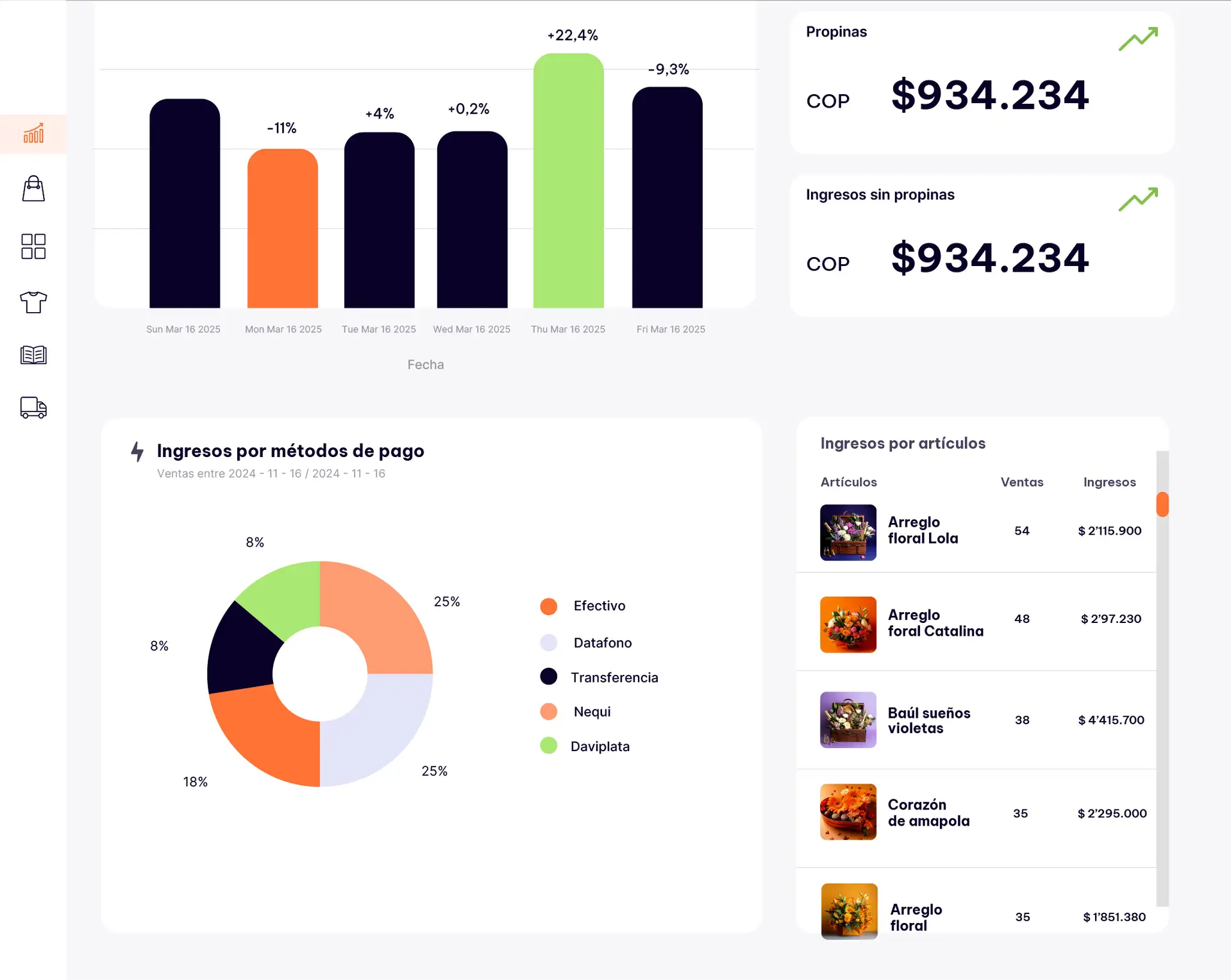Introduction: The Foundation of Your Retail Dreams
Every successful retail story begins with a single, crucial decision: where to plant your flag. It’s the moment when your business dreams meet the concrete reality of location, foot traffic, and rent checks. Yet for many aspiring retailers, this decision feels overwhelmingly complex, especially when you’re navigating unfamiliar territory or launching your first store.
The truth is, choosing the right location isn’t just about finding a space—it’s about finding your business’s future home. It’s where your customers will discover you, where your brand will come to life, and where your entrepreneurial journey will unfold daily. The weight of this decision can feel paralyzing, particularly when you’re working with limited capital, tight timelines, or incomplete knowledge of your target market.
But here’s what successful retailers know that newcomers often miss: you don’t need to be a local expert to make smart location decisions. You don’t need decades of experience in a city to identify profitable opportunities. What you need is a systematic approach, the right research tools, and the confidence to trust data over gut feelings when the stakes are high.
The retail landscape has evolved dramatically. Traditional rules about “prime” locations are being rewritten by changing consumer behaviors, digital integration, and innovative business models. Pop-up shops thrive in unconventional spaces, online brands successfully transition to physical retail, and smart entrepreneurs are discovering profitable opportunities in overlooked neighborhoods that others dismiss.
This shift presents both challenges and unprecedented opportunities. While the competition for obviously perfect locations remains fierce, savvy retailers are finding success in unexpected places by understanding their customers deeply, leveraging technology for market research, and thinking creatively about what makes a location truly “right” for their specific business.
The fear of making the wrong choice keeps many potential retailers stuck in perpetual planning mode. They research endlessly, second-guess every option, and ultimately miss opportunities while waiting for the “perfect” location that may not exist. The reality is that success comes from making informed decisions with the information available, then adapting and optimizing based on real-world feedback.
Your location decision will impact every aspect of your business—from daily operations and customer experience to long-term profitability and growth potential. But rather than letting this responsibility overwhelm you, embrace it as your first major entrepreneurial milestone. The skills you develop in location selection—research, analysis, negotiation, and calculated risk-taking—will serve you throughout your retail journey.
1. Understanding Your Customer Before You Understand Your City
The biggest mistake new retailers make is falling in love with a location before understanding who they’re serving. Your ideal customer should drive your location decision, not the other way around. This customer-first approach is especially crucial when you’re new to an area, as it provides an objective framework for evaluation that transcends local biases or assumptions.
Start by creating detailed customer personas that go beyond basic demographics. Consider their daily routines, shopping habits, transportation preferences, and lifestyle choices. A busy professional might value convenience and quick access, while a leisure shopper might prioritize ambiance and browsing time. Understanding these nuances helps you identify locations that naturally align with your customers’ behaviors and preferences.
Research your target customers’ digital footprints to understand their geographic patterns. Social media analytics, Google reviews, and local business directories can reveal where your ideal customers already spend time, shop, and socialize. This data-driven approach is particularly valuable when you’re unfamiliar with local preferences and can reveal unexpected opportunities that locals might overlook.
Consider the customer journey from discovery to purchase and beyond. Where do your customers first hear about businesses like yours? How do they research and compare options? What factors influence their final buying decisions? Understanding this journey helps you evaluate locations based on their ability to support each stage, from initial awareness to post-purchase satisfaction.
Don’t assume your customers’ needs match your personal preferences. Your lifestyle, schedule, and shopping habits might be completely different from your target market. This objectivity is actually an advantage when you’re new to an area—you’re less likely to be influenced by personal biases about “good” versus “bad” neighborhoods or locations.
Practical Exercise: Create a “Customer Day Map” for your primary persona. Document their typical day from morning to evening, noting where they travel, what they do, and when they might need your products or services. This visualization will help you identify potential locations that intersect with their natural patterns and routines.
2. The Art and Science of Foot Traffic Analysis
Foot traffic is the lifeblood of retail success, but measuring and understanding it requires both analytical skills and intuitive observation. Modern retailers have access to sophisticated tools Practical Exercise: Create a “Customer Day Map” for your primary persona. Document their typical day from morning to evening, noting where they travel, what they do, and when they might need your products or services. This visualization will help you identify potential locations that intersect with their natural patterns and routines.and data sources that can provide insights previously available only to large chains with extensive research budgets.
Start with digital tools that provide traffic pattern data. Platforms like Google Analytics Demographics, Facebook Audience Insights, and specialized retail analytics services can show you foot traffic patterns, peak hours, and demographic breakdowns for specific locations. These tools are particularly valuable when you can’t personally observe locations for extended periods.
However, digital data only tells part of the story. Personal observation remains crucial for understanding traffic quality, not just quantity. Spend time at potential locations during different days of the week and times of day. Note not just how many people pass by, but who they are, how they move, what they’re carrying, and whether they seem rushed or relaxed.
Pay attention to traffic patterns that might not be immediately obvious. Some locations have strong morning commuter traffic but become dead zones in the afternoon. Others might see weekend surge that doesn’t appear in weekday observations. Understanding these patterns helps you match your business model and operating hours to natural customer flow.
Consider the concept of “earned traffic” versus “natural traffic.” Natural traffic consists of people who pass by your location as part of their regular routines. Earned traffic includes people who make special trips to visit your area. Both have value, but they require different business strategies and have different sustainability profiles.
Analyze the competition’s traffic patterns as well. Are similar businesses in the area thriving or struggling? What can you learn from their customer flow, peak hours, and seasonal variations? Sometimes the best insights come from observing what’s working (or not working) for businesses with similar customer bases.
Don’t overlook online-to-offline traffic potential. Many modern customers research online before visiting physical locations. Areas with strong digital engagement might have untapped foot traffic potential, especially if current businesses aren’t effectively leveraging their online presence.
Practical Exercise: Conduct a “Traffic Audit” of your top three location candidates. Spend at least two hours at each location during different times (morning, afternoon, evening) and days (weekday, weekend). Record the number of people passing by, their apparent demographics, and their behavior patterns. Create a simple comparison chart to visualize the differences.
3. Negotiating Like a Pro: Lease Terms That Protect Your Future
Lease negotiation is where many new retailers make costly mistakes that haunt them for years. The excitement of finding a great location can cloud judgment during negotiations, leading to unfavorable terms that limit flexibility and profitability. Understanding commercial lease fundamentals is essential, regardless of your experience level or market knowledge.
Start by understanding different lease structures and their implications. Triple net leases (NNN) might seem expensive upfront but can provide cost predictability. Gross leases appear simpler but may include hidden cost escalations. Percentage rent clauses tie your rent to sales performance, which can be beneficial for seasonal businesses or when you’re confident in your growth potential.
Research market rates thoroughly before entering negotiations. Commercial real estate websites, local business associations, and even competing properties can provide benchmarking data. Don’t rely solely on the landlord’s claims about “market rate”—verify independently. This research is especially important when you’re new to an area and lack local market knowledge.
Focus on clauses that provide operational flexibility. Co-tenancy clauses protect you if anchor tenants leave. Use clauses allow you to adapt your business model if needed. Assignment and subletting rights provide exit strategies if circumstances change. These protections are particularly valuable for new businesses that may need to pivot or scale quickly.
Negotiate for tenant improvement allowances and rent concessions that support your launch timeline. Many landlords are willing to invest in improvements or provide rent-free periods to secure quality tenants. These concessions can significantly reduce your initial capital requirements and improve your cash flow during the critical early months.
Consider the total cost of occupancy, not just base rent. Factor in utilities, maintenance, insurance, taxes, and any required improvements. A slightly higher rent in a location with lower operating costs might be more profitable than a “bargain” space with hidden expenses.
Pay attention to renewal options and rent escalation clauses. Your initial lease terms might be acceptable, but automatic increases or unfavorable renewal terms can make a location unaffordable as your business grows. Negotiate for predictable, reasonable increases that align with your projected growth.
Practical Exercise: Create a “Lease Comparison Worksheet” that includes all costs and terms for each location you’re considering. Include base rent, additional fees, improvement costs, and any concessions. Calculate the total first-year cost and projected five-year cost to make accurate comparisons.
4. Location Validation: Testing Before You Commit
Smart retailers validate their location choice before signing long-term commitments. This validation process helps identify potential issues early and provides confidence in your decision. Modern validation techniques range from simple observational studies to sophisticated market testing approaches.
Consider temporary or pop-up arrangements as validation tools. Many landlords are open to short-term arrangements that allow you to test a location with minimal commitment. Pop-up events, temporary kiosks, or seasonal arrangements can provide valuable data about customer response, traffic patterns, and operational challenges.
Leverage digital tools for market validation. Online surveys, social media polls, and location-based advertising can help gauge customer interest and preferences for specific areas. These tools are particularly valuable when testing multiple locations or when you need to validate assumptions about customer behavior in unfamiliar markets.
Conduct “mystery shopping” of competing businesses in your target area. This research provides insights into customer preferences, price sensitivity, service expectations, and unmet needs. Pay attention to busy times, popular products, customer complaints, and service gaps that your business might fill.
Test your logistics and operations before committing. Consider delivery routes, supplier access, employee commute times, and parking availability. Operational challenges that seem minor during the search process can become major problems once you’re open for business.
Analyze the location’s adaptability to different business scenarios. How would the space work if you needed to expand, contract, or pivot your business model? Locations that offer flexibility provide more options as your business evolves and market conditions change.
Consider seasonal and economic factors that might affect the location’s viability. Some areas that seem perfect during certain times of year become challenging during others. Economic downturns, construction projects, or traffic pattern changes can significantly impact location performance.
Use financial modeling to test different scenarios. Create projections based on conservative, realistic, and optimistic assumptions about foot traffic, conversion rates, and average transaction values. This modeling helps you understand the range of possible outcomes and identify break-even points.
Practical Exercise: Develop a “Location Scorecard” with weighted criteria that matter most to your business (foot traffic, parking, visibility, competition, costs, etc.). Score each potential location objectively, then use this data to make a rational decision that you can confidently defend to investors, partners, or advisors.
5. Making the Decision: Balancing Data with Intuition
After conducting thorough research, analysis, and validation, you’ll eventually face the moment of decision. This is where many entrepreneurs get stuck, waiting for perfect certainty that never comes. Successful retailers learn to balance data-driven insights with intuitive judgment, making confident decisions with incomplete information.
Recognize that perfect locations don’t exist—only locations that are right for your specific business at a particular time. The “best” location on paper might not be the best choice for your budget, timeline, or risk tolerance. Focus on finding locations that meet your essential criteria and offer acceptable trade-offs for areas where they fall short.
Trust your research but acknowledge its limitations. Data can tell you what happened in the past and what’s happening now, but it can’t predict the future with certainty. Market conditions change, consumer preferences evolve, and unexpected events can alter location dynamics. Your decision should be based on the best available information while remaining adaptable to changing circumstances.
Consider your personal and business capacity for different types of challenges. A location with high traffic but complex logistics might be perfect if you thrive on operational challenges but terrible if you prefer simplicity. A developing area with growth potential might be ideal if you can handle uncertainty but problematic if you need immediate stability.
Factor in your timeline and opportunity costs. Sometimes a good location available now is better than a perfect location that might become available later. Business momentum is valuable, and waiting too long can mean missing other opportunities or losing competitive advantage.
Think about your location decision as part of a broader business strategy rather than an isolated choice. How does this location support your marketing plans, operational goals, and growth objectives? The right location should enhance your overall business strategy, not require you to fundamentally change your approach.
Don’t underestimate the value of gut feeling, especially after you’ve done thorough research. Your intuitive response to a location—how it feels, how customers might perceive it, how comfortable you are there—provides important data that’s hard to quantify but easy to ignore.
Plan for multiple scenarios from the start. What will you do if the location exceeds expectations? What if it underperforms? What if market conditions change? Having contingency plans reduces decision paralysis and provides confidence to move forward.
Practical Exercise: Write a “Location Decision Letter” to yourself, documenting why you’re choosing a particular location, what you expect to achieve, and how you’ll measure success. Include both the data that supports your decision and the intuitive factors that influenced you. This letter will serve as a reference point for future decisions and help you learn from the outcome.
Final Reflection: Your Location is Just the Beginning
Choosing your retail location is a significant milestone, but it’s important to remember that it’s just the beginning of your journey, not the destination. The most successful retailers understand that a great location provides opportunities, but it’s what you do with those opportunities that determines your success.
Your location choice reflects your current understanding of your business, customers, and market. As you gain experience and insight, you’ll likely see aspects of your decision that you would handle differently with hindsight. This is normal and valuable—it means you’re learning and growing as a business owner. Don’t let perfectionism prevent you from taking action, and don’t let initial challenges make you doubt your fundamental decision-making abilities.
The relationship between retailer and location is dynamic and evolving. You’ll discover things about your space, your customers, and your market that weren’t apparent during the selection process. Some of these discoveries will be pleasant surprises; others will be challenges to overcome. Your ability to adapt, optimize, and innovate within your chosen location will be just as important as the initial selection.
Remember that many successful retailers have thrived in less-than-perfect locations by focusing on what they could control: exceptional customer service, compelling product selection, effective marketing, and operational excellence. Conversely, some retailers have failed in “perfect” locations because they relied too heavily on location to drive success without building strong fundamental business practices.
Your location decision is an investment in your future, but it’s not a permanent trap. Successful retailers regularly evaluate their location’s performance and aren’t afraid to make changes when circumstances warrant. Whether that means renegotiating lease terms, expanding to additional locations, or eventually moving to a better space, maintain the flexibility to evolve with your business needs.
The skills you’ve developed in choosing your location—research, analysis, negotiation, and decision-making under uncertainty—are transferable to every aspect of retail management. You’ll use these same skills for inventory decisions, staffing choices, marketing strategies, and growth planning. The confidence you build by making and executing this important decision will serve you well in future challenges.
Take pride in reaching this milestone. Many aspiring retailers never progress beyond the planning stage because they get overwhelmed by the complexity of location selection. By working through the process systematically and making a decision, you’ve demonstrated the entrepreneurial courage that separates successful retailers from perpetual planners.
Your chosen location is now your business partner. Treat it with respect, maximize its potential, and don’t be afraid to ask more of it as your business grows. The relationship between retailer and location should be mutually beneficial—your success enhances the value of the location, while the location provides the foundation for your success.
Most importantly, remember that your location choice is just one factor in your retail success story. Your passion, dedication, customer focus, and willingness to learn and adapt will ultimately determine your outcomes. A great location gives you a head start, but sustained success comes from the daily choices you make about how to serve your customers and build your business.
The journey ahead will be challenging, rewarding, and full of unexpected turns. Your location provides the stage, but you’re the star of the show. Make it count.





